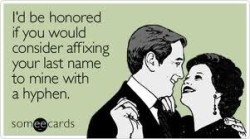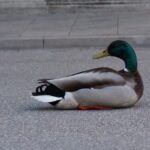
Hyphens, dashes, and ellipses are less talked about punctuation than, let’s say, commas and semicolons, but they are important to use correctly, nonetheless. And actually many of us use (and overuse) the dots and lines that are dashes and ellipses.
First, let’s talk about hyphens and dashes—the lines. There are three sizes of lines, all different punctuation marks with different uses. Sometimes the problem is the ability to make the different lines on your computer!
– This little one is a hyphen.
–This medium one is an en dash.
—This long one is an em dash.
I have a Mac. The hyphen is on the number line. That one is easy. I made the en dash with Option/Hyphen. I made the em dash (the longest one) by pressing Shift/Option/Hyphen. You can also use Insert Symbol for the long one, and just choose a long line. These symbols, of course, are in the middle of the line. They are not underscores (_). Some people use two hyphens in a row for an em dash. Often (but I could never figure out when), the computer will put them together for you. It results is a short em dash, but it works. We rarely use the en dash, the shorter one, for anything, so generally an en might substitute for an em. However, if your writing is being editing, your editor might fix those dashes to make them proper em dashes.
Hyphen – The hyphen is used to separate words; that is its only function. It separates words that don’t fit on a line. This use becomes more obsolete as computers can fit the type without splitting words at the end of the line. Or, the computer splits the word for you. If you are writing by hand, make sure that words split on the end of the line are split at the syllable break. One-syllable words cannot be split, and proper nouns should not be split either.
Hyphens are also used in some words that have a prefix, where running the whole thing together might be unclear. There may be two vowels in a row, for example.
Example: co-op is different from coop.
However, most words like this are clear and do not need the hyphen: cooperate, reorder, reestablish
Some words with a short prefix still usually use a hyphen: ex-husband
In a word’s evolution, the word often starts out as two separate words (e mail). As the word becomes more common, it is often hyphenated
(e-mail). When the word becomes very common, it often becomes one word (email).
To determine whether of not to hyphenate a word, look it up in the dictionary. If the dictionary gives you a choice, or two dictionaries disagree, choose one way and stick to it. Consistency always give you an air of expertise!
In addition to splitting words with hyphens, you use a hyphen in some compound adjectives, but only if the adjective comes before the noun.
Examples:
I like well-done steak. BUT I like my steak well done.
I have a three-year-old daughter. BUT My daughter is three years old.
Hyphens are also used in the numbers twenty-one to ninety-nine, which are often spelled out; and fractions used as adjectives:
My piggy bank is two-thirds full. BUT I have two thirds of a cake left. (not an adjective here)
En Dash – The en dash is not used very often. It is used as the minus sign in math, and it is used in number ranges. So, you will see it in indexes for sure!
Examples: pages 25–30 OR Jim Jones (1825–1900) was a hero to us all.
Em Dash — The em dash is used (and often overused) to indicate an abrupt change in thought or to emphasize something. If the section to be put within dashes is not a complete sentence, commas can sometimes be used instead (you cannot put a complete sentence in the middle of a sentence and put commas around it; you will have a run on). Parentheses can also be used instead of an em dash, but are far less dramatic!
Examples: I was looking for the cat—I hadn’t seen her in over a week—when I found her in the attic.
My daughter—looking so radiant—got married yesterday.
To make sure you have your dashes in the right place, take out the portion of the sentence within the dashes. The rest of the sentence should be a complete sentence and should make sense on its own without the words that are within the dashes.
Important Note: There are no spaces before or after a hyphen, en dash, or em dash.
Ellipsis . . . The ellipsis is commonly used when something is left out of a quote to make it shorter. Just be careful that you don’t change the meaning of the quote by leaving out selected material. An ellipsis is also used to indicate an unfinished list or unfinished thought at the end of a sentence.
The ellipsis is made with three periods. There is a space before the first period, a space between each of the periods, and a space after the last of the three periods if the ellipsis is in the middle of a sentence or at the end of something that is not a complete sentence. If the ellipsis is used at the end of the sentence, the ending punctuation comes after the three periods. So, if the sentence would end in a period, the ellipsis has four dots instead of three. Another form of punctuation, if necessary, instead of a period, would come after the ellipsis.
Examples:
The mayor said, “There is no reason to increase our taxes in this city . . . would cause the taxpayers great hardship.”
The mayor said, “There is no reason to increase our taxes in this city . . . . (There is more to the speech, but the part given is a complete sentence, so there are four periods.)
She thought to herself, I need to get out of this place because if I don’t . . . (There is no ending period because there is no end to the speaker’s sentence. She is trailing off.)
And this is the end of this blog post . . . .



Now I have a question about ellipsis v. ellipses. Until now, I had thought that one dot was an “ellipsis,” and three dots were “ellipses.” But now I am thinking that an “ellipsis” is one omission, and multiple omissions are “ellipses.” In other words, it’s not the number of dots but the number of omissions. If so, what an eye-opener for me! Please confirm.
As far as I know, ellipses is the plural of ellipsis. An ellipsis is the series of three ofr four dots that indicates an omission. More than one of these instances would be ellipses.
I knew about the singular and plural spellings. I think you’re confirming that ellipsis/ellipses is/are the omissions and not the dots. ??
Well, the ellipsis is three or four dots, so it is the dots because it is the name of the punctuation, I think. But if you use more than one series of dots, then you have used ellipses.
As usual, clear explanations accompanied by helpful examples.
Re hyphens in compound adjectives: Your explanation could have served as an example; specifically, “[O]ne-syllable words cannot be split, and proper nouns should not be split either.”
Re ellipses at the end of a sentence: I learned that the first ellipsis serves as the period to the sentence; the other three indicate omitted material. I just checked with a Grammar Girl (whom we both respect) blog on this, and she agrees
Or is it the other way around: The first three indicate the omitted materials and the last one is the period??? I don’t know; they all look the same to me! LOL. It would just make sense to have the period at the end, but it doesn’t matter because they are all the same anyway.
I find the habit of newspapers to break up a word wherever they feel like it is disconcerting. They seem to have no compunction about breaking up proper nouns either.
Newspapers march to the beat of their own drummers! The don’t capitalize headlines sometimes either.
Thank you, Arlene, for teaching me that when a character’s thought trails off there is no ending period. It looks so funny to me but I will follow your lead! If the unfinished phrase were spoken, in quote marks, would there be an ending period before the end-quote?
I find that whole thing confusing myself: the difference between trailing off and trailing off but putting a period because there is a complete sentence somewhere…if the words were spoken, I would put a period, definitely, even if the quote were not a complete sentence. That was a little awkward response, but the answer to your question is Yes!
In typography, the ellipsis points are preferred to be entered using the fixed ellipsis character offered on the Macintosh by using option-; (option semicolon). These have the advantage of (1) not breaking over the end of a line and (2) having consistent spacing.
The period-space-period-space-period method allows most word processing and page layout programs to split a line between a pair of the periods, though you can use non breaking spaces to block unintended splits.
The fixed ellipsis point character also accommodates a fourth point (period) for end of sentence breaks. In InDesign it is best to select the combination of the ellipsis points and the period and set the letterspacing to “metrics” rather than the generally preferred “optical” setting. This ensures that the four dots are spaced consistently. When using the fixed width ellipsis character, no space should be inserted between it and a period for a forth dot, to avoid an unwanted line break.
Indeed, in modern typesetting the dot-space-dot-space-dot sets too widely in most cases, leaving a “hole” in the typography that is considered a flaw by experienced typesetters. (This also applies to only having a single space following a period at the end of a sentence. However, if you look at older books, you will see a wider space after periods — but this was done as a convenience to simplify setting justified text with the primitive tools then available.)
Pete – I really appreciate your comment. I did forget to mention in my blog post to make sure you never split the ellipsis over two lines! And I know that there are better ways to make an ellipsis; I was simply giving the most common easy way in Word. However, I think my readers will appreciate reading your much more correct and knowledgeable explanation, so thank you! Readers: Listen to what Pete says—he is one of the most knowledgeable people I have ever known!